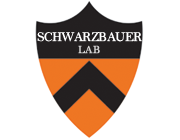Rapid intracellular assembly of tenascin hexabrachions suggests a novel cotranslational process.
Type
Tenascin, an extracellular matrix protein that modulates cell adhesion, exists as a unique six-armed structure called a hexabrachion. The human hexabrachion is composed of six identical 320 kDa subunits and the structure is stabilized by inter-subunit disulfide bonds between amino-terminal segments. We have examined the biosynthesis of tenascin and its assembly into hexabrachions using pulsechase labeling of U-138 MG human glioma cells. Newly synthesized tenascin hexamers are secreted within 60 minutes of translation initiation. Intracellularly, as early as full length tenascin can be detected in pulse-labeled cell lysates, it is already in hexameric form. No precursors, such as monomers, dimers, or trimers, were identified that could be chased into hexamers. This lack of assembly intermediates suggests that nascent tenascin polypeptides associate prior to completion of translation. In contrast, fibronectin monomers in the same lysates are gradually formed into disulfide-bonded dimers. Although hexamer assembly is rapid, the rate-limiting step in secretion appears to be transport to the medial Golgi as endoglycosidase H-resistance was not detected until after a 30 minute chase. These results provide evidence for a novel co-translational mechanism of tenascin assembly which would be facilitated by its length and by the amino-terminal location of the assembly domain.

